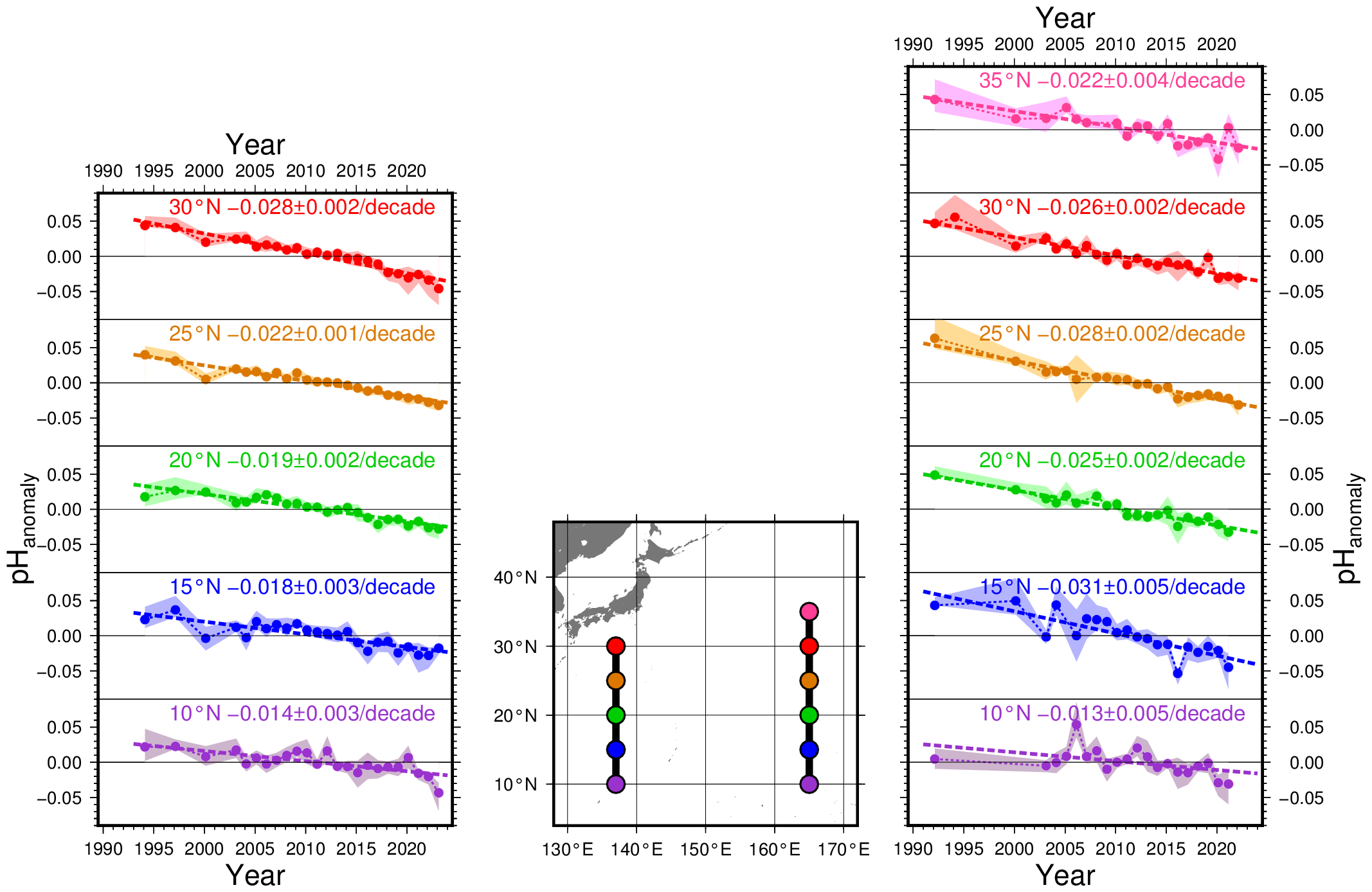Updated on 5 Mar. 2025
Japan Meteorological Agency
Rates of pH decrease in the ocean interior along 137°E and 165°E are 0.013–0.031 per decade since the 1990s. The pH values in the ocean interior have shown a clear long-term trend of decrease.

Long-term trends of pH between 25.0σθ and 26.9σθ (a depth range of about 150–800m) along 137°E (left) and 165°E (right).
Plots show pH anomalies from averages for the whole period on the isopycnals at each latitude. The shaded areas and bold dotted lines represent the standard deviation range (±1σ) and the long-term trend, respectively. The numbers indicate rates of change at each latitude. The '±' symbols indicate a 95% confidence interval.
A long-term trend of pH decrease (known as ocean acidification) is observed due largely to the dissolution of atmospheric carbon dioxide (CO2) in ocean water. The CO2 absorbed by the ocean is considered to have been transported into the ocean interior through ocean circulation and biological processes, and to be causing ocean acidification in the interior as well as in the surface layer.
To monitor the long-term variability of ocean acidification in the ocean interior, the Japan Meteorological Agency (JMA) has long conducted oceanic CO2 observation together with hydrographic/hydrochemical observation in the western North Pacific since the 1990s. The results show a trend of in-situ pH decrease in the ocean interior at a rate of 0.013–0.031 per decade. The pH values in the ocean interior have shown a clear long-term trend of decrease.
The rate of decrease in the northern part of the subtropical region tends to be higher than that in the southern part. This is consistent with the distribution of the column inventory of anthropogenic CO2.